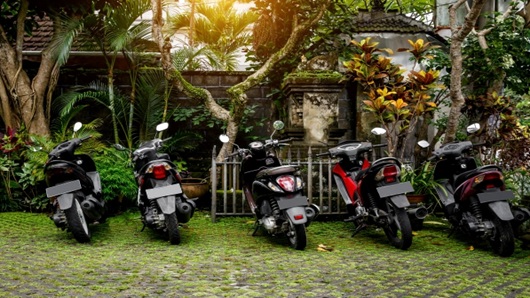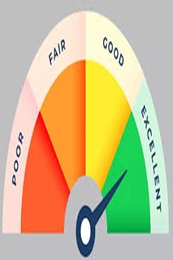Two-Wheeler Insurance Explained
April 15, 2025

Are you considering buying a two-wheeler? While it's exciting to own a bike, it's crucial to protect yourself from potential risks on the road. Bike insurance provides coverage against accidents and liabilities arising from them.
To make an informed decision and select the best two-wheeler insurance policy for your vehicle, it's important to understand the different types of insurance policies available in the market and consider various factors.
When choosing a two-wheeler insurance policy, it's beneficial to research and compare policies to find the best coverage at an affordable premiums.
Types of Bike Insurance Policies
When it comes to two-wheeler insurance, there are primarily two types of policies available: Comprehensive Insurance and Third-Party Insurance.
1. Comprehensive Insurance
A comprehensive two-wheeler insurance plan provides coverage against theft or damage to your vehicle as well as any accidents or damages caused to a third party. It offers protection against natural calamities like earthquakes and floods, as well as man-made calamities like theft or riots.
Additionally, comprehensive policies usually include personal accident cover for the owner-driver.
2. Third-Party Insurance
Third-party insurance only covers damages caused by your vehicle to a third party's property or vehicle. It does not cover theft or damage to your own vehicle. This type of insurance provides coverage for legal liabilities arising from accidental damages, such as permanent injury, death, or damage to property of a third party.
Both third-party and comprehensive insurance policies are typically valid for a year and need to be renewed annually unless you opt for a long-term policy.
Factors to Consider When Buying Two-Wheeler Insurance Policy
Now that you understand the types of bike insurance policies available, let's discuss the factors you should consider when purchasing two-wheeler insurance:
1. Insurance Premium
The premium for your two-wheeler insurance policy depends on various factors, including the cubic capacity (CC) of your bike's engine and its geographical location. Higher CC engines attract higher premiums, while cities in Zone A have higher premium rates compared to those in Zone B.
2. Insured Declared Value (IDV)
IDV represents the current market value of your vehicle. It determines the maximum amount you can claim in case of total loss or theft. As your bike ages, its IDV decreases.
3. Riders
If you feel that your current policy coverage is insufficient, you can enhance it by adding riders to your existing policy. Common riders include roadside assistance and personal accident cover.
4. No Claim Bonus (NCB)
Non Claim Bonus is a reward or discount offered by the insurance provider that accumulates when you have a claim-free policy term. NCB generally occurs at the time of policy renewal.
5. Claim Procedure
Check the claim settlement ratio of insurers to ensure efficient and hassle-free claim settlement. A good two-wheeler insurance policy comes with an easy and efficient claim procedure.
6. Buy Online
Purchasing two-wheeler insurance online eliminates the need for middlemen or agents, reducing the cost of the policy. It also requires less paperwork and offers lower premium rates.
Two-Wheeler Insurance Premium Calculation
The premium for your two-wheeler insurance policy is determined by various factors, including the cubic capacity (CC) of your bike's engine and its geographical location.
The cubic capacity of your bike's engine plays a significant role in calculating the premium. According to the India Motor Tariff, vehicles are categorised into three groups based on CC: 0-150CC, 150-350CC, and 350CC and above. The higher the CC, the higher the premium. This is a crucial aspect when considering bike insurance.
Geographical location also affects the premium calculation. Insurance companies divide locations into Zone A and Zone B. Cities falling under Zone A have higher premiums compared to those in Zone B.
Understanding these factors can help you make better decisions while purchasing a two-wheeler insurance policy.
Two-Wheeler Insurance Claim Procedure
Having a smooth and efficient claim settlement process saves a lot of time and energy. To ensure hassle-free claim settlement, it's important to consider the claim settlement ratio of the insurer.
The claim settlement ratio represents the percentage of claims settled by an insurance company against the total number of claims received. A higher claim settlement ratio indicates the company's efficiency in settling claims. This is particularly important for those with bike insurance, as quick claim settlements can prevent financial strain.
When comparing different insurers, pay attention to their claim settlement ratios. It's advisable to choose an insurer with a high claim settlement ratio to ensure a smooth and hassle-free experience.
Final Thoughts
Consider factors such as premium, insured declared value (IDV), riders, claim procedure, and the option to buy vehicle insurance policy online. Carefully evaluate these factors and understand your coverage requirements, so that you can choose the right bike insurance policy that provides adequate protection for your vehicle.
Planning to get your dream bike? Ujjivan SFB offers affordable two-wheeler loans. Get up to 85% financing of the on-road price of the vehicle. Alternatively, you can browse through Ujjivan SFB product suite - our wide range of financial products are designed to make your financial life better.
FAQs
1. What are the benefits of buying two-wheeler insurance online?
Buying two-wheeler insurance online offers several benefits, including cost-effectiveness, convenience, and the ability to easily compare quotes from different insurers.
2. How does buying insurance online save money?
Buying insurance online saves money by eliminating commission fees, which reduces policy costs and lowers premiums.
3. What makes the online purchase process convenient?
The online purchase process is convenient due to minimal paperwork and the ability to complete the process from home using a computer or smartphone.
4. Can I compare insurance quotes online?
Yes, online platforms allow easy comparison of quotes from different insurers.
5. What is the Insured Declared Value (IDV)?
IDV represents the current market value of your vehicle and determines the maximum claim amount for total loss or theft.
6. How does IDV change over time?
As your bike ages, its Insured Declared Value (IDV) decreases.
7. What is a zero depreciation cover?
A zero depreciation cover ensures that you receive the full claim amount without any depreciation deductions on parts during repairs or replacements.
8. What services does roadside assistance cover offer?
Roadside assistance cover offers services such as towing, fuel delivery, and battery jump-starts during breakdowns or emergencies.
9. What does personal accident cover provide?
Personal accident cover provides coverage for accidental injuries or death of the owner-driver.
10. Why should I add riders to my two-wheeler insurance policy?
You should add riders to your two-wheeler insurance policy because they allow for customisation and provide additional coverage beyond the basic policy.
Latest Blogs

Telangana Housing Board & KPHB Colony: A Guide to Affordable Urban Housing in Hyderabad
March 14, 2025
As Telangana continues its rapid urbanisation journey, two key housing entities—Telangana Housing Board (THB) and Kukatpally Housing Board Colony (KPHB)—have played critical roles in shaping the state's real estate ecosystem.

Does Checking CIBIL Score Frequently Lower Your Credit Points?
April 07, 2025
Imagine you're planning to apply for a home loan, a credit card, or even a car loan. Naturally, you want to ensure your CIBIL score is in good shape before proceeding.

Explained: Can NRIs Buy an Agricultural Land in India?
April 03, 2025
Real estate investment is often a top priority for Non-Resident Indians (NRIs) looking to retain strong financial ties to India.

How to Improve Your CIBIL Score from 600 to 750: A Step-by-Step Guide
April 02, 2025
Your CIBIL score is like your financial reputation—banks check it before approving loans or credit cards. If your score is hovering around 600, you might face difficulties in securing credit or may get loans with higher interest rates.

What Happens When You Leave Your Savings Account Unused?
April 01, 2025
Imagine waking up one day to find that your hard-earned money is locked away and inaccessible. Sounds stressful, right? This is precisely what happens when you leave your Savings Account inactive for too long.



